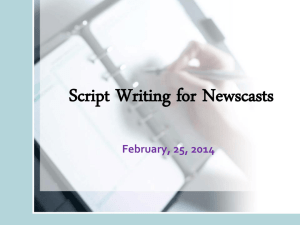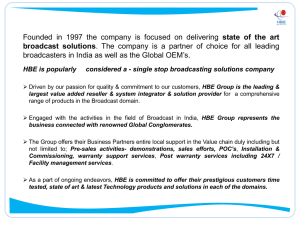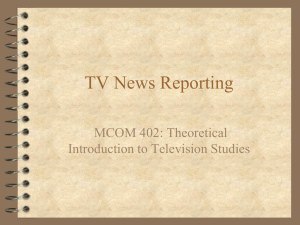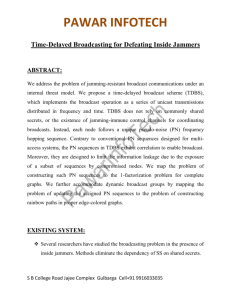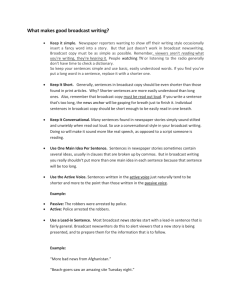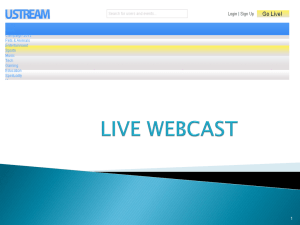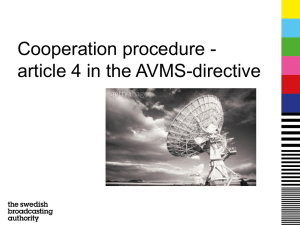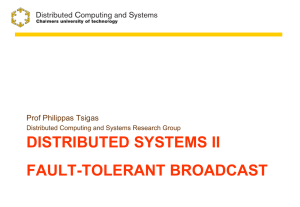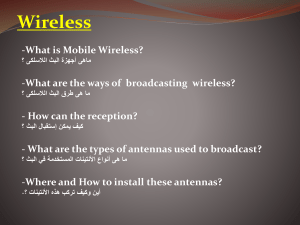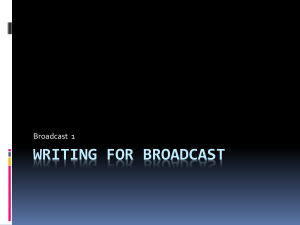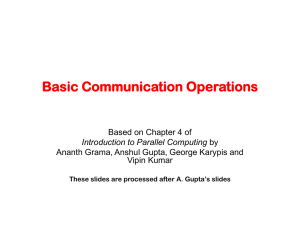Broadcast Journalism
advertisement
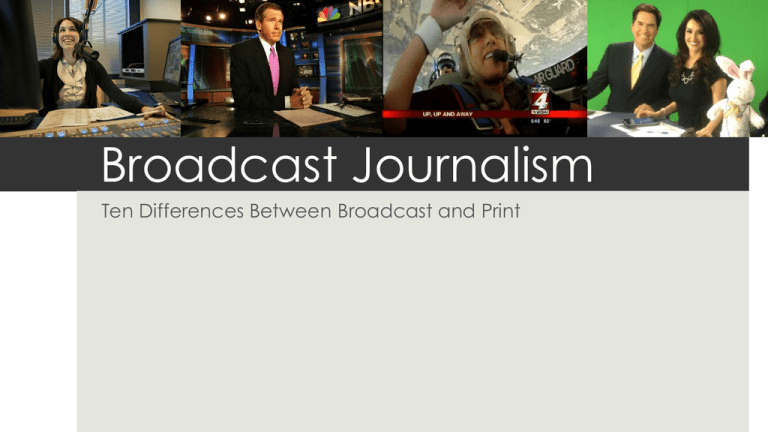
Broadcast Journalism Ten Differences Between Broadcast and Print #1: BE CONVERSATIONAL In broadcast, you write the way you talk Your language will be more relaxed, to a point Watch out for construction delays if you’re driving on Sessoms tomorrow. Tomorrow, today, last night, tonight… #2: KEEP IT SHORT Broadcast sentences are incredibly short and simple Avoid lengthy introductory clauses Clauses are not your friend in broadcast writing PRINT: John Smith, a San Marcos taxi driver who claims a passenger was drunk and insulted him Monday night, was arrested and charged with assaulting the passenger. BROADCAST: A San Marcos cab driver is in jail, accused of attacking a passenger. #3. GET RID OF INVERTED PYRAMID Broadcast stories have beginning, middle and end You want the viewer or listener to stick with the story and keep watching/listening Final line typically advances the story The San Marcos city council will vote on the issue tomorrow. #4: USE PRESENT TENSE WHEN POSSIBLE Timeliness is a major difference between broadcast and print PRINT: A San Marcos man was hospitalized Monday night after he was hit by a train. BROADCAST: A San Marcos man is recovering this morning after being hit by a train. Don’t be afraid to use past tense, but you should always look for fresh story angles #5. MOST CONTRACTIONS ARE OKAY Because we’re writing like we talk, you can use contractions in broadcast writing The only time to avoid contractions are when they are audibly confusing Are, aren’t, jury’s, etc. #6. QUOTES/ATTRIBUTION ARE DIFFERENT Attribution goes at the beginning PRINT: Jones confessed to murdering his wife, police said. He could face the death penalty if convicted. BROADCAST: Police say Jones confessed to murdering his wife. PRINT: “I felt like I was at home,” said President Obama. BROADCAST: President Obama says he felt like he was at home. #6. QUOTES/ATTRIBUTION ARE DIFFERENT Important notes about quotes/attribution: In broadcast, it’s better to just use the actual sound from someone than trying to paraphrase what they said. Always use some kind of title or descriptor Vice President Joe Biden Police chief Howard Williams Texas State president Denise Trauth Mass comm major Vaughn Wolfe San Marcos resident Steven Torres #7. PRONUNCIATION IS IMPORTANT If you have a tough-to-pronounce word or name, you need to let talent know how to say it Mahmoud (Mock-mood) Ahmadinejad (Ack-ma-dee-nahjad) #7. PRONUNCIATION IS IMPORTANT One important note about names: If the name isn’t vital to a broadcast story, don’t include it Most spot news/crime stories will not have names associated with them #8. PUNCTUATION HELPS YOU READ Dashes and/or ellipses show when to pause Quarterback Tony Romo says he’ll be ready to play…and win…this next season. Let talent know when a word needs emphasis City council *has* to pick a firm by tomorrow. #9. AVOID ABBREVIATIONS In broadcast, spell out just about everything ST: Is that saint or street? DR: is that doctor or drive? Well-known acronyms are used (with hyphens) F-B-I, I-R-S, N-C-DOUBLE-A or N-C-A-A If pronounced like a word, no hyphens NATO, NASA #9. AVOID ABBREVIATIONS An important note: Avoid symbols in broadcast writing $ = dollars % = percent At and And d-b-2-8-4-5-5 at Texas State dot e-d-u #10. ROUND OFF NUMBERS AND SPELL THEM OUT Numbers can create massive chaos in a broadcast story (and take incredibly too long to read) PRINT: The thieves stole $397,945 worth of jewelry. BROADCAST: The thieves stole nearly 400-thousand dollars worth of jewelry. #10. ROUND OFF NUMBERS AND SPELL THEM OUT A few important notes about numbers: 0: zero 1-11: spell out as words 12-999: use numerals More than 999: use a combo of numbers and words (13thousand, etc.) and round off if possible Broadcast Journalism DON’T FORGET You get one shot for your story to make sense in broadcast You have to make it as easy as possible for the talent to read clearly Viewers/listeners can’t re-read the story if they’re confused
